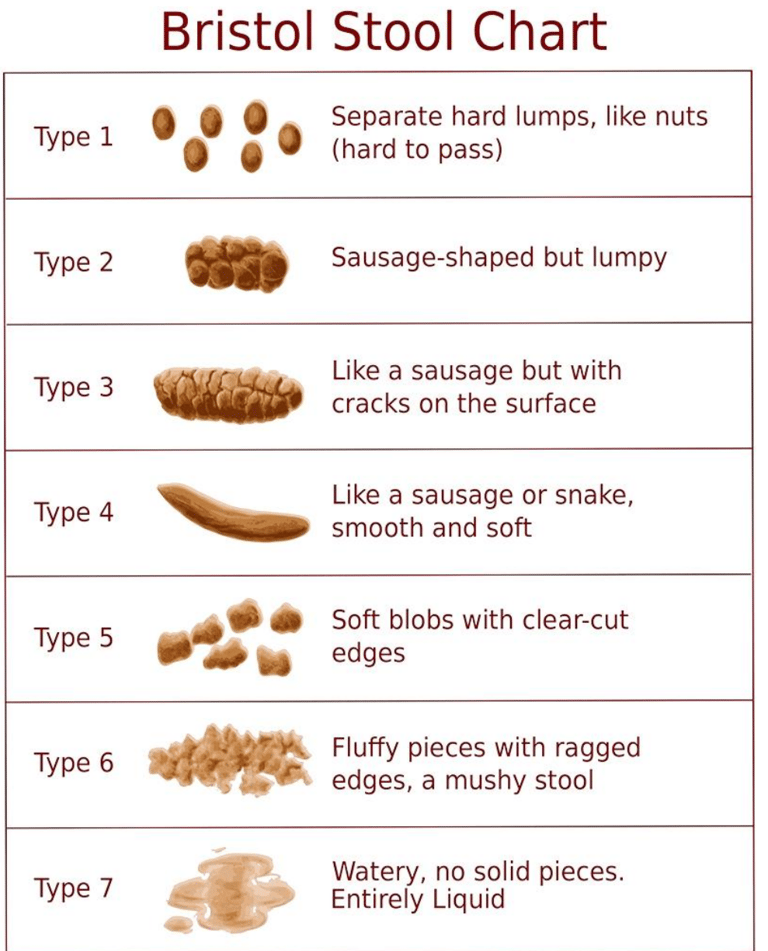Your Poop
Health of Poop
Talking about poop may not be quite the subject for the dinner table, however when it comes to the health of our digestive system, the appearance of our poop can tell us a lot.
Healthy poop should be a medium to dark brown colour and have a firm but soft consistency that is easy to pass. It should also be shaped like a log or a sausage, with smooth edges and a uniform texture. Ideally, there should be no visible signs of undigested food or mucus in the stool, and it should not have a foul odour. Additionally, healthy poop should be passed without discomfort or pain, and bowel movements should occur regularly without excessive strain or urgency. These signs of healthy poop indicate that your digestive system is functioning properly.
On the other hand unhealthy poop signs can include changes in colour, consistency, and odour. For example, if your poop is consistently green or yellow, this could be a sign that your body is not properly digesting food. Similarly, if your poop is hard and difficult to pass, this may indicate dehydration or an inadequate fiber intake. While foul-smelling poop can be due to foods you have eaten or medicines you are taking it can also potentially be a red flag for digestive issues, such as an infection or inflammation in the gut. It's important to pay attention to these signs and make adjustments to your diet and lifestyle accordingly and to seek medical attention if any issues are not resolving. See here for signs that you should be talking to your GP.
Frequency
It is important to have regular bowel movements to maintain good digestive health. The frequency of bowel movements varies from person to person, but ideally, it should occur once a day. However, some people may have bowel movements less frequently, which can still be considered normal as long as they don't experience any discomfort or other digestive problems. Having bowel movements less than 3 times per week is usually considered constipation. On the other hand, others may have bowel movements more than once a day, which is also considered normal. If you are going less than usual for you personally then this can also be considered constipation. Factors that affect bowel movement frequency include diet, hydration, exercise, and medication use. If you experience changes in bowel movement frequency or have other digestive symptoms, it is recommended to speak with a healthcare provider.
Bristol stool chart
The Bristol stool chart is a tool used to classify human feces into seven different types based on their consistency and shape. This chart is commonly used by medical professionals to determine the health of a patient's digestive system. The seven types of stools range from type 1, which is hard and lumpy, to type 7, which is watery with no solid pieces. A healthy stool is typically classified as type 3 or 4, which are easy to pass and have a sausage-like shape. Any deviation from these types may indicate an underlying health issue, such as constipation, diarrhea, or inflammation of the digestive tract. By monitoring the consistency and shape of stools and using the Bristol stool chart as a guide, individuals can take a proactive approach to maintaining their digestive health. If you regularly have stools that are not considered typically healthy you should seek medical advice to rule out any underlying pathology.






